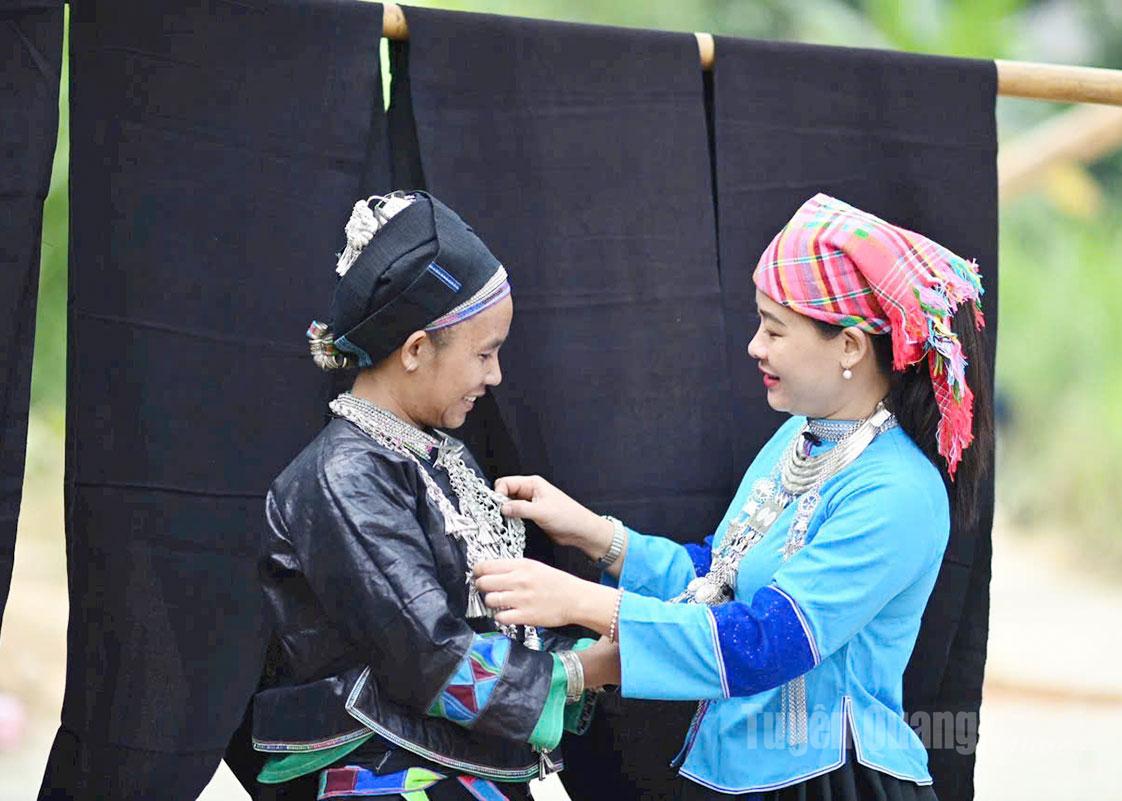 |
| Nung U women often wear typical black costumes combined with silver jewelry during Tet and festivals. |
The Nung U people have a long history with many unique customs and practices, but the most outstanding is the women's clothing. The Nung U women's dress is not as colorful as some other ethnic groups, but is simple and elegant with a quiet indigo tone.
The blouse is loose, just below the waist, with silver buttons in the middle of the chest. The neckline, sleeves, and hem are decorated with strips of blue and white fabric, sometimes with contrasting colored threads, delicate yet striking. The skirt of the Nung U women is ankle-length, neatly pleated, when worn, it is wrapped around the back and fastened securely at the waist. When working in the fields, the corner of the skirt is tied behind the back, creating a look that is both discreet and graceful.
Accompanying the skirt is an indigo five-panel shirt, short enough to cover the hips, loose enough to be convenient when going to the fields or working in the fields. The sleeves and chest are often covered with black fabric, creating a subtle highlight. On festivals and weddings, Nung U women wear a scarf and silver jewelry such as necklaces, bracelets, and hairpins, both to beautify themselves and as a token of faith in the guardian deities.
Ms. Vang Thi Phuong, Thong Nhat village, Nam Dan commune said: “To make that durable indigo fabric, the indigo plant plays an important role in the life of the Nung U people. Young girls grow up in indigo fields, learn how to plant, harvest, and ferment indigo leaves, stir indigo water with lime, and filter out the jade-green essence. From the indigo water jar, through the hands of women, the pure white cotton fabrics gradually absorb the blue-black color, then are dried in the sun, polished with smooth pebbles or smooth wood, so that the fabric fibers become shiny, smooth, tough, and have a characteristic black color.”
Today, Nam Dan still maintains the tiled roofs of stilt houses, nestled next to a cool stream. Late in the afternoon, in the sunset, women carry baskets of brown tubers from the forest, preparing for a new batch of indigo. Brown tubers are an additive to help the indigo adhere better and the fabric color more evenly. Currently, people in Nam Dan still maintain the indigo dyeing profession, sewing dresses and making handicrafts to serve tourists. The old profession is still passed down to their descendants, each needle and thread seems to encapsulate many stories of the village.
Not only preserving and conserving traditional crafts, the Nung U people in Nam Dan now consider indigo clothing as a link to community tourism . Tourists come to Nam Dan not only to admire ancient stone slabs with mysterious carvings or enjoy the pristine mountain scenery, but also to experience picking indigo leaves, incubating indigo, dyeing fabric, sewing shirts, and embroidering scarves. Each indigo fabric brought back is a part of the memory, a piece of the Nung U ethnic culture in Nam Dan.
In the midst of the integration vortex, when many mountainous villages have lost their traditional crafts, the Nung U people in Nam Dan commune still preserve the indigo color as if preserving their roots. Each fold of skirt, shirt, and head scarf still has the scent of the mountains and forests. That is the soul of the homeland, the identity to be passed on from generation to generation of the Nung U ethnic group.
Article and photos: Van Long
Source: https://baotuyenquang.com.vn/van-hoa/202507/sac-cham-tren-vay-ao-phu-nu-nung-u-nam-dan-fc659e8/


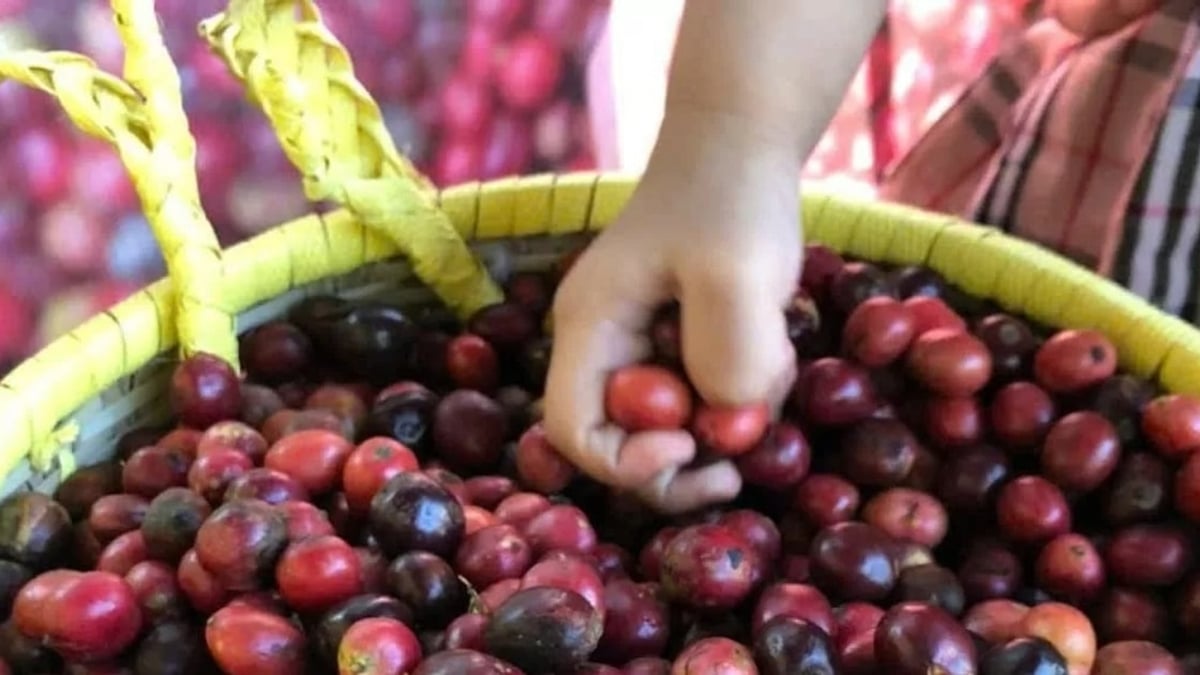
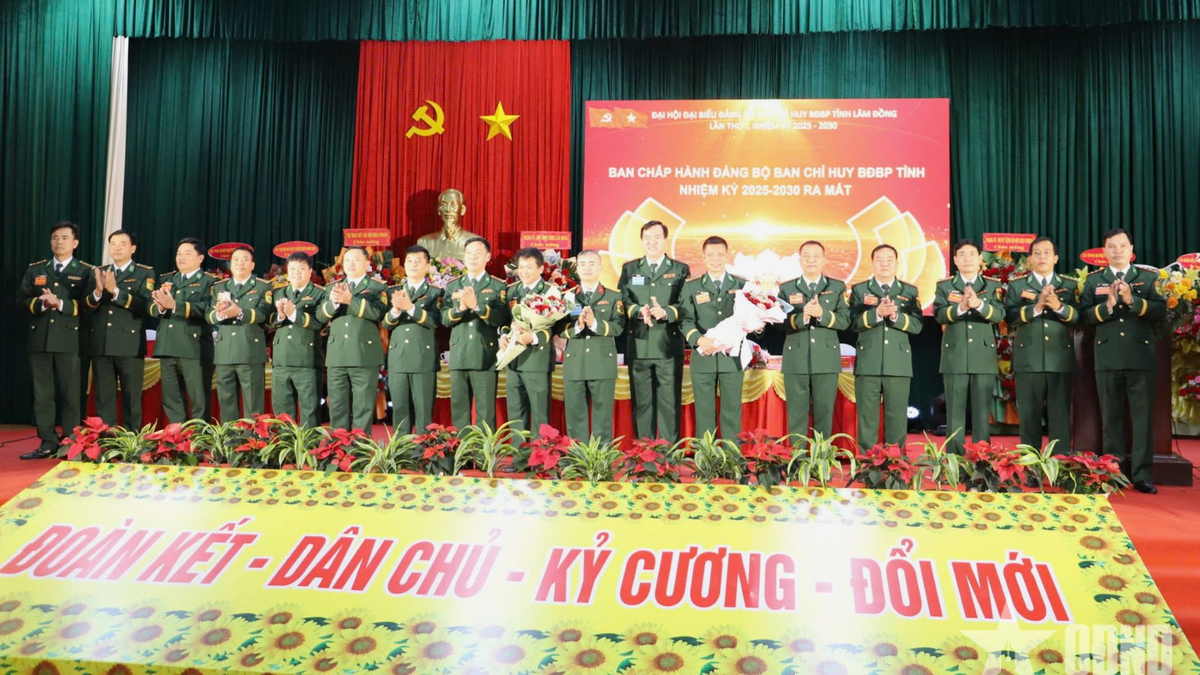

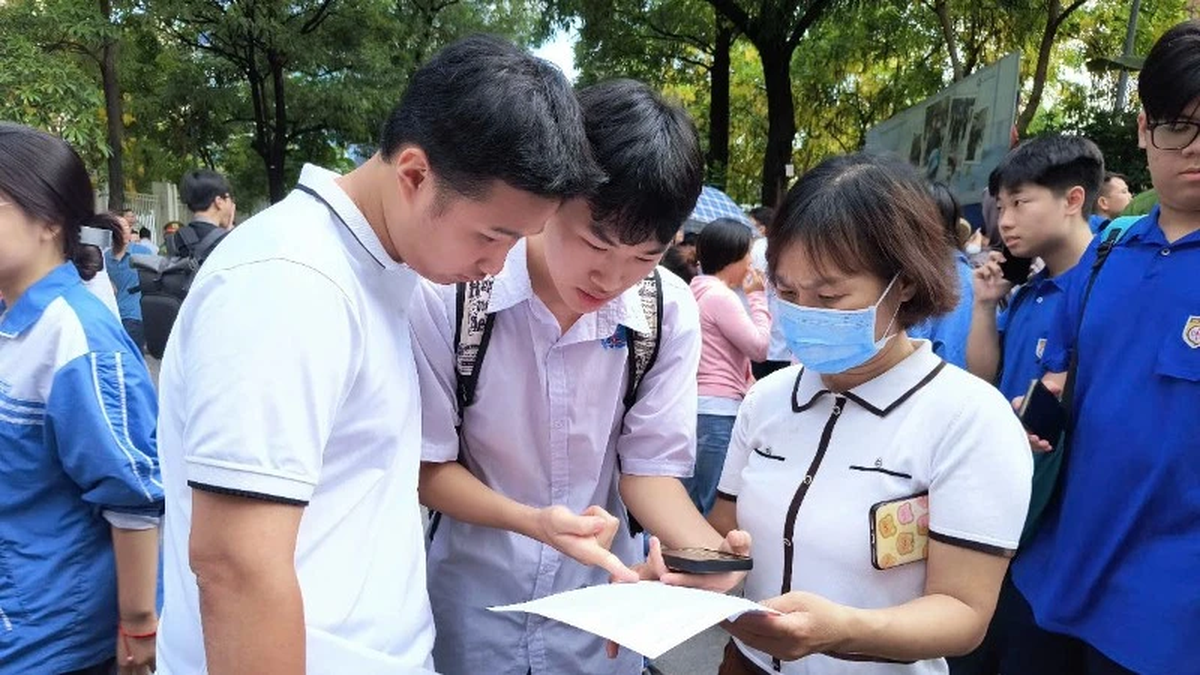
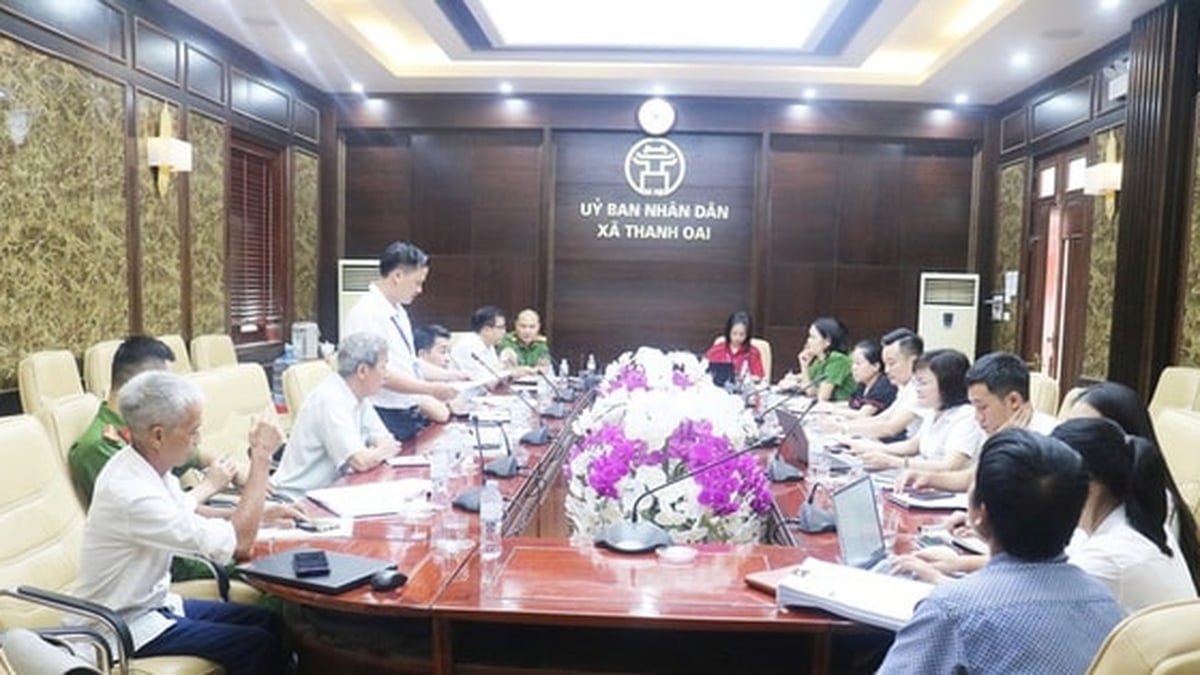
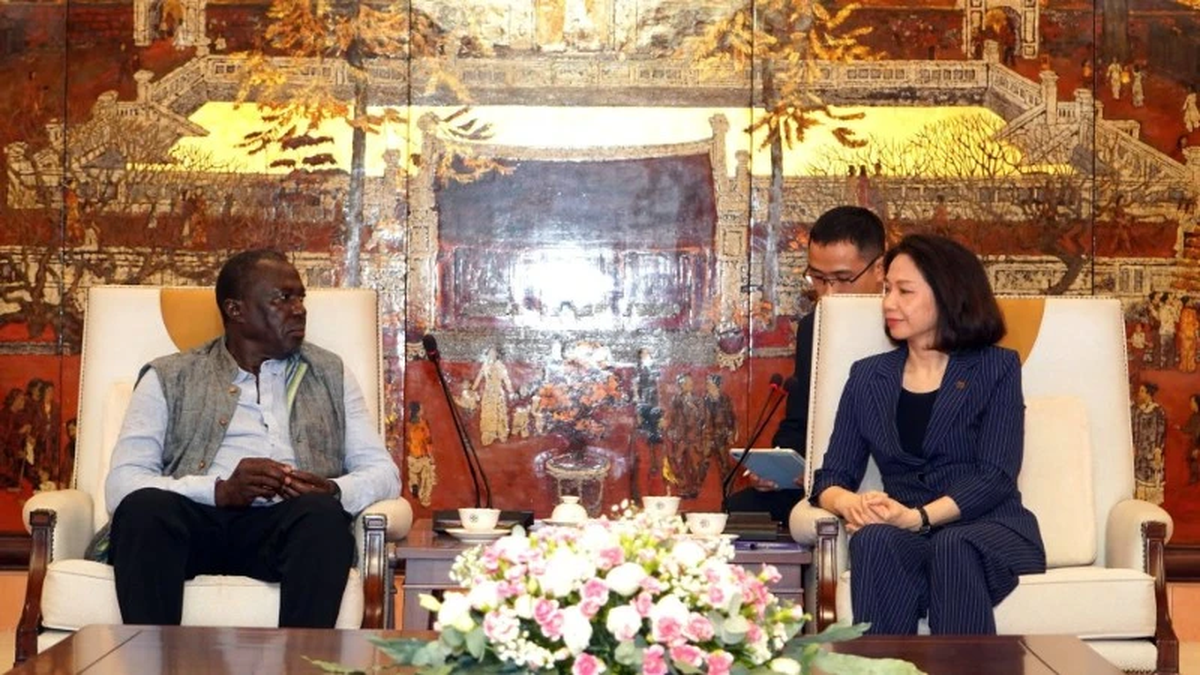


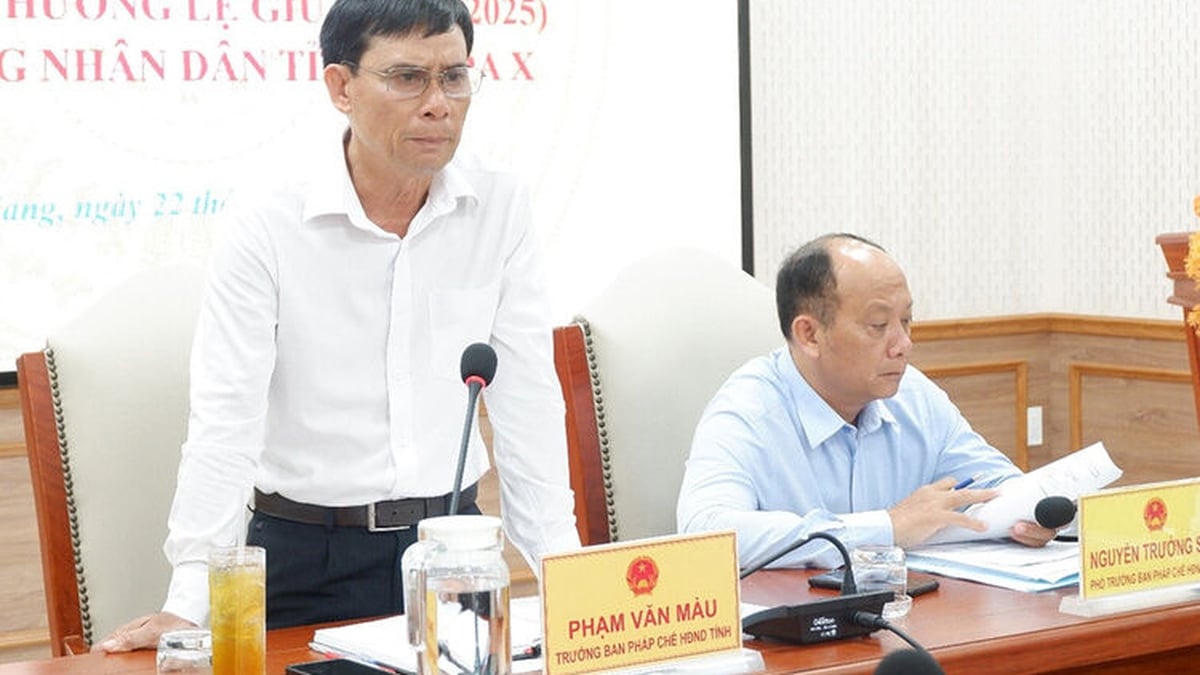
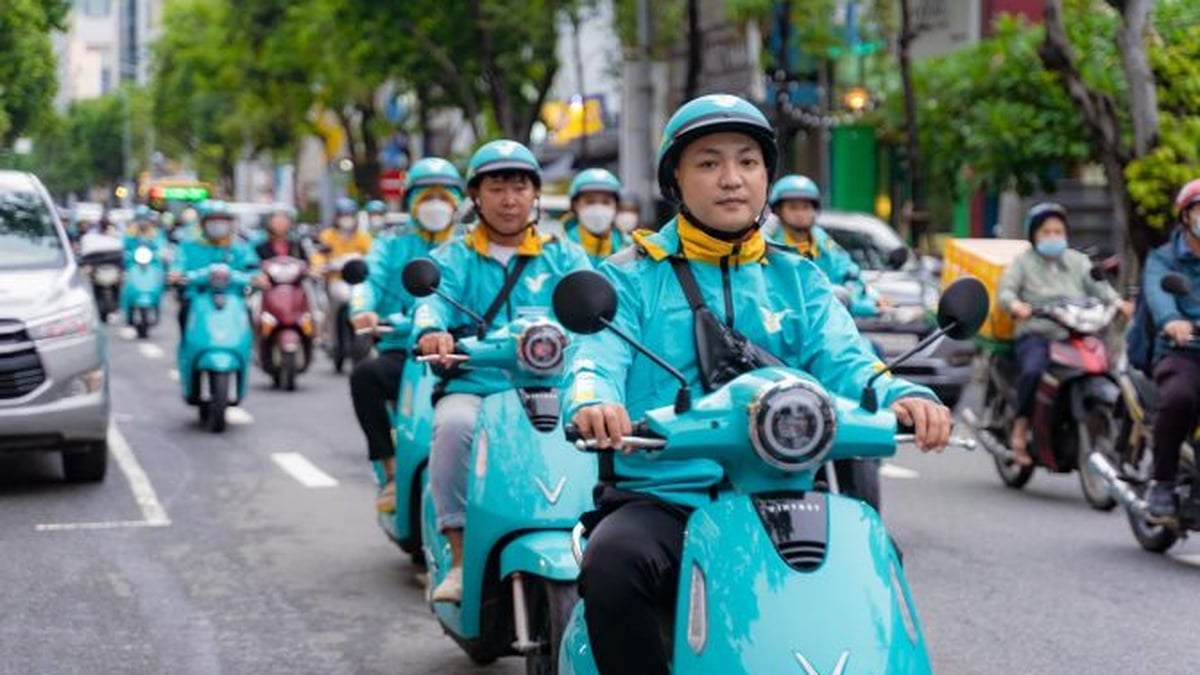















![[Photo] National Assembly Chairman Tran Thanh Man visits Vietnamese Heroic Mother Ta Thi Tran](https://vphoto.vietnam.vn/thumb/1200x675/vietnam/resource/IMAGE/2025/7/20/765c0bd057dd44ad83ab89fe0255b783)




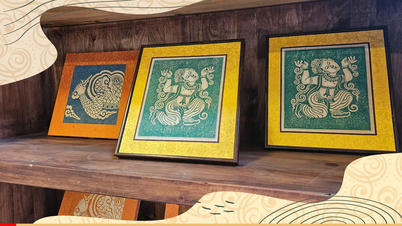

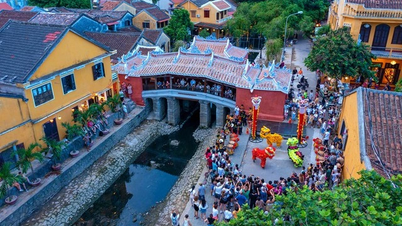

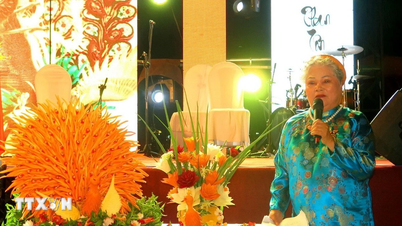

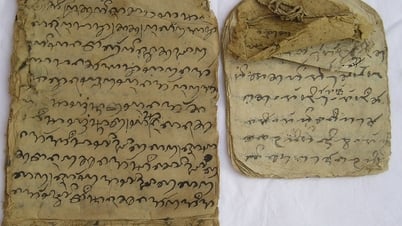



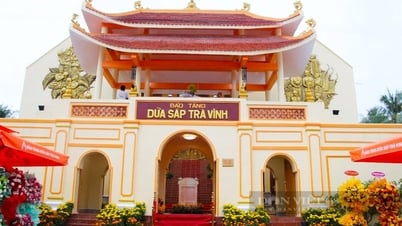
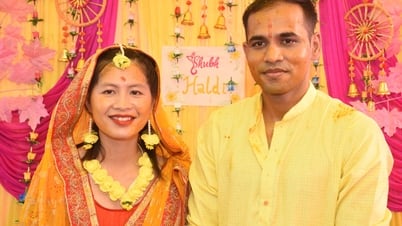



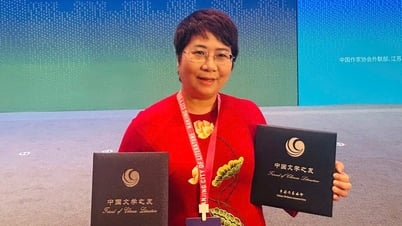



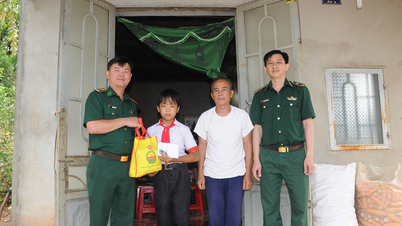












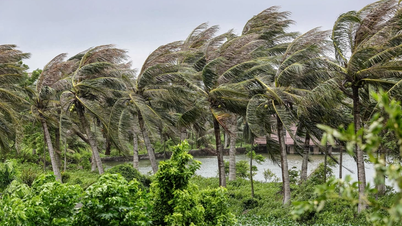

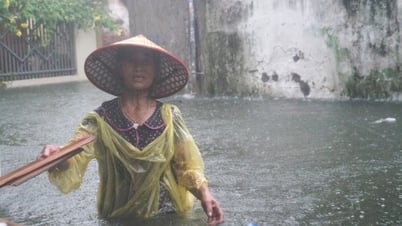



































Comment (0)